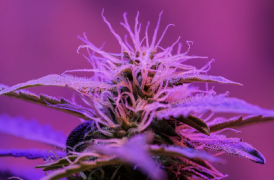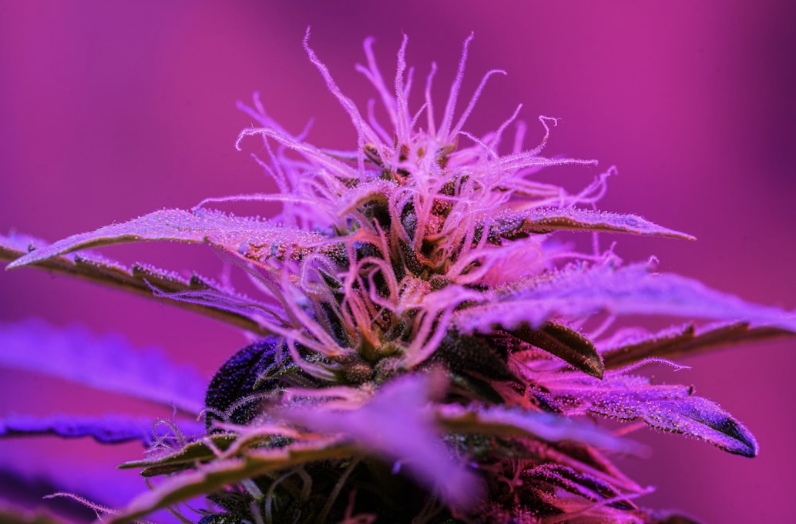Cannabis has been used for centuries for its medicinal properties, and in recent years, there has been a growing interest in its potential health and wellness benefits. From managing chronic pain to alleviating anxiety and depression, cannabis has shown promise in improving various aspects of our well-being. In this blog post, we will explore the benefits of cannabis for health and wellness and discuss how to incorporate it into your daily routine. Whether you are new to cannabis or a seasoned user, this article aims to provide valuable information and resources to help you make informed decisions about your health.
Incorporating Cannabis into Your Daily Routine
If you are interested in incorporating cannabis into your daily routine, there are a few tips to keep in mind. First, it’s important to start low and go slow. Cannabis affects everyone differently, so it’s best to start with a low dose and gradually increase as needed. It’s also essential to choose the right strain of cannabis for your desired effects. Sativa strains are known for their energizing and uplifting effects, while Indica strains are more relaxing and sedating. Hybrid strains offer a combination of both.
Utilizing a weed delivery service can significantly simplify the process for those who prioritize convenience or may not have easy access to a dispensary. Such services offer various products, from different strains of flowers to edibles and topicals, delivered directly to your door with privacy and ease. This method is especially beneficial for individuals with mobility issues or those living in areas with limited cannabis retail options. Choosing a reputable weed delivery service ensures you get quality, tested products suitable for your wellness goals.
There are several ways to consume cannabis, each with its pros and cons. Smoking is the most common method, but it can be harsh on the lungs and may not be suitable for everyone. Vaping is a popular alternative that involves heating cannabis flower or oil to a temperature that releases the cannabinoids without burning the plant material. Edibles are another option, with cannabis-infused foods and beverages providing a longer-lasting and more potent effect. Finally, topicals such as creams and lotions can be applied directly to the skin for localized relief.
The Role of Cannabis in Managing Chronic Pain
| Study | Sample Size | Duration | Results |
| Ware et al. (2010) | 23 | 21 days | Significant reduction in pain intensity and improved sleep quality |
| Wilsey et al. (2013) | 39 | 8 weeks | Significant reduction in pain intensity and improved quality of life |
| Haroutounian et al. (2016) | 32 | 4 weeks | Significant reduction in pain intensity and improved sleep quality |
| Boehnke et al. (2019) | 1,000+ | N/A | Over 90% of patients reported cannabis use reduced their chronic pain |
Chronic pain affects millions of people worldwide and can have a significant impact on their quality of life. Traditional pain medications often come with unwanted side effects and can be addictive. This has led many people to seek alternative treatments, including cannabis. Research has shown that cannabis can be effective in managing chronic pain thanks to its ability to interact with pain receptors in the body.
Different strains of cannabis have various levels of THC and CBD, which can affect their pain-relieving properties. High-THC strains are often preferred for severe pain, as THC has been shown to have analgesic properties. However, high-THC strains can also come with psychoactive effects, so it’s essential to start with a low dose and monitor your response. CBD-rich strains, on the other hand, are non-intoxicating and have been found to have anti-inflammatory properties, making them suitable for milder forms of pain.
How Cannabis Can Help with Anxiety and Depression
Anxiety and depression are two of the most common mental health disorders affecting millions of people worldwide. Traditional treatments often involve medications that can have unwanted side effects and may not be effective for everyone. This has led many people to explore alternative therapies, including cannabis. Research has shown that cannabis can help alleviate symptoms of anxiety and depression, thanks to its ability to interact with receptors in the brain that regulate mood and emotions.
Different strains of cannabis have different effects on anxiety and depression. Sativa strains, with their energizing and uplifting effects, are often preferred for anxiety. They can help boost mood and provide a sense of euphoria, making them suitable for social situations or when you need a pick-me-up. Indica strains, on the other hand, are more relaxing and sedating, making them suitable for depression. They can help calm the mind and promote relaxation, making sleeping and managing stress easier.
Exploring the Different Forms of Cannabis Consumption
There are several different forms of cannabis consumption, each with its pros and cons. Smoking is the most common method, but it can be harsh on the lungs and may not be suitable for everyone. Vaping is a popular alternative that involves heating cannabis flower or oil to a temperature that releases the cannabinoids without burning the plant material. This method is considered to be less harmful than smoking and allows for more precise dosing.
Edibles are another option for consuming cannabis. These are foods or beverages that have been infused with cannabis extract or oil. Edibles provide a longer-lasting and more potent effect compared to smoking or vaping, but they can take longer to kick in. It’s essential to start with a low dose and wait at least two hours before consuming more, as the effects can be delayed. Topicals such as creams and lotions can be applied directly to the skin for localized relief from pain or inflammation.
Cannabis and Fitness: Enhancing Your Workout Routine
Cannabis and fitness may not seem like an obvious combination, but many athletes and fitness enthusiasts have found that cannabis can enhance their workout routine. Cannabis has been shown to have anti-inflammatory properties, which can help reduce muscle soreness and promote faster recovery after exercise. It can also help increase focus and motivation, making staying on track with your fitness goals easier.
Different strains of cannabis have different effects on fitness. Sativa strains are often preferred for pre-workout use because of their energizing and uplifting effects. They can help boost energy levels and improve focus, making getting in the zone during your workout easier. Indica strains, on the other hand, are more relaxing and sedating, making them suitable for post-workout use. They can help calm the mind and promote relaxation, making it easier to wind down after a challenging workout.
Using Cannabis as a Natural Sleep Aid
Sleep is essential for our overall health and well-being, but many people struggle with sleep-related issues such as insomnia or poor sleep quality. Traditional sleep aids often come with unwanted side effects and can be addictive. This has led many people to seek natural healing alternatives, including cannabis. Research has shown that cannabis can be an effective natural sleep aid thanks to its ability to promote relaxation and reduce anxiety.
Different strains of cannabis have different effects on sleep. Indica strains, with their relaxing and sedating effects, are often preferred for sleep. They can help calm the mind and promote relaxation, making it easier to fall asleep and stay asleep throughout the night. CBD-rich strains, on the other hand, are non-intoxicating and have been found to have anxiolytic properties, making them suitable for those who struggle with anxiety-related sleep issues.
Navigating the Legal Landscape of Cannabis Use
The legal landscape of cannabis use varies from country to country and even within different states or provinces. It’s essential to familiarize yourself with the laws and regulations surrounding cannabis use in your area to ensure that you are using it safely and legally. In some places, cannabis may be fully legalized for both medical and recreational use, while in others, it may be illegal or only available for medical use.
If you live in a place where cannabis is legal, it’s still essential to follow the rules and regulations set forth by the government. This may include age restrictions, possession limits, and restrictions on where you can consume cannabis. It’s also important to be aware of the potential risks associated with cannabis use, such as impaired driving or the risk of addiction. Using cannabis responsibly and in moderation is vital to ensuring your safety and well-being.
Building a Supportive Cannabis Community
Consider attending cannabis events or workshops in your area. These events often feature industry experts and provide an opportunity to learn more about cannabis and connect with others passionate about it. Finally, consider contacting local dispensaries or cannabis organizations to see if they offer support groups or educational programs. These resources can provide valuable information and support as you navigate your cannabis journey.
In conclusion, cannabis has shown promise in improving various aspects of our health and well-being. From managing chronic pain to alleviating anxiety and depression, cannabis has the potential to enhance our overall quality of life. By incorporating cannabis into our daily routine safely and responsibly, we can experience the benefits it has to offer. Whether you are new to cannabis or a seasoned user, it’s essential to educate yourself about the different strains, forms of consumption, and legal landscape surrounding cannabis use. By doing so, you can make informed decisions about your health and well-being and build a supportive cannabis community along the way.




















